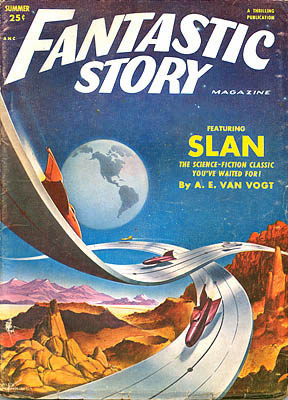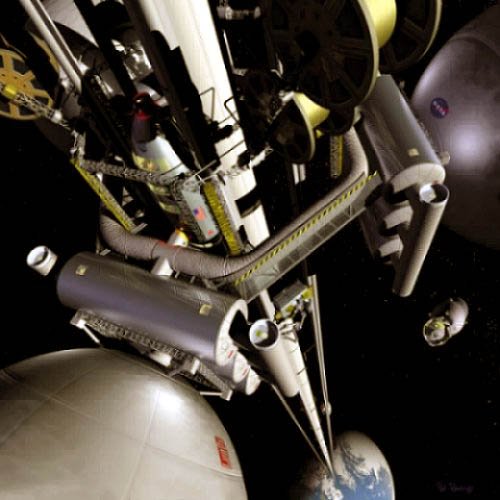Pulp Fiction Art
Today, can we tell a book by its cover? The University of Houston's College of Engineering presents this series about the machines that make our civilization run, and the people whose ingenuity created them.
When I was a kid, my parents trafficked with the artsy intelligentsia of St. Paul, Minnesota — musicians, actors, writers. We left all that behind when we moved to Oregon. It no longer suited my parents as they grew older, and it'd never suited me. I was bent toward the visual world from the beginning. Words left me baffled, but I loved and understood pictures. More on that in a moment.
My closest contact with the literati came through ping-pong. The Wandrei brothers, Donald and Howard were family friends. They wrote high-end science fiction and, in those days, you found the best science fiction in the pulp magazines. Since younger brother Howard died young, Donald is better known today. When they visited, Howard and I played ping-pong. We were pretty evenly matched.
Now all that comes back in a Smithsonian magazine article about the 1930s and '40s pulp-magazine cover art. During the Depression, some of America's best artists did covers for science fiction and detective stories — at roughly fifty dollars each.
The style was wonderful. I was too inept a reader for the articles themselves, but, Oh, the fine lurid art on the covers! Intense colors and high theater drew us in as Odysseus was drawn by the whirlpool Charybdis. Those artists had Remington's instinct for hooking us right upon the apex of action. We see a fiery-haired woman, in a yellow dress, racing away on a bright red motorcycle. A man struggling to gain his balance in the cycle's sidecar, clutches bundles of five-dollar bills in one arm. He juggles a gun in the other hand. The woman fires her gun over his head at unseen pursuers. A sold black background dramatizes the colors.
We know half the story already, and we need to know the rest. Indeed, an artist sometimes produced a picture; then the editor hired someone to write a story that would match it. Ernest Chiriaka, one of the few pulp artists still living, signed covers with only his initials — he'd hoped no one would recognize him. N. C. Wyeth did cover art. The irony is that, today, the surviving covers are often to be found in art museums.
New York City mayor Fiorello LaGuardia was so offended by some of the detective magazines that he required covers be torn off and destroyed before the magazines were displayed. (Beyond the airport named after him, LaGuardia is lovingly remembered for reading the Sunday comics to children on the radio, during WW-II.)

In any case, I played ping-pong with Howard Wandrei and wondered how all the words he wrote did justice to those covers. I built model airplanes and wondered how soon we'd go to the stars — the way the pictures promised we would.
Howard died the year before Sputnik, but he'd known we'd leave Earth. And despite recent setbacks, my hopes still ride upon those pictures — so strong in their primary colors, so raw in their promises, so correct in catching the clear hard light of space.
I'm John Lienhard, at the University of Houston, where we're interested in the way inventive minds work.
(Theme music)
D. Stewart, Guys and Molls. Smithsonian, August 2003, pp. 54-59.
For bibliographies of Donald and Howard Wandrei, see: http://www.fantasticfiction.co.uk/authors/Howard_Wandrei.htm
http://www.fantasticfiction.co.uk/authors/Donald_Wandrei.htm
(It's difficult to do a full accounting of Howard's writing because he also wrote under a dizzying variety of pseudonyms.)
Examples of Pulp cover may be seen in this website about important pulp artist, Graves Gladney:
http://www.pulpartists.com/Gladney.html
And the image above may found in this excellent collection:
http://www.asahi-net.or.jp/~we8y-mrt/vanvogt/magazinecover.html

This 21st-century NASA image of a conceptual "Space Elevator" is remarkable in the way it captures (or reflects — it's hard to tell which) the style and content of the 1930's Pulps.